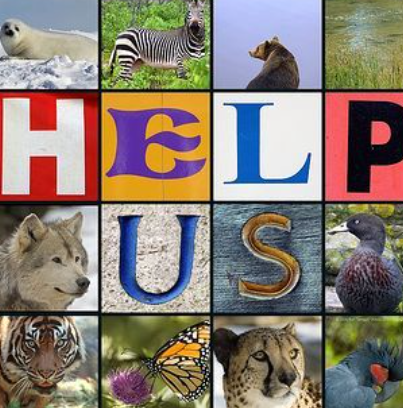Helping Endangered Animals: A Thousand Words on Conservation and Compassion
In the vast tapestry of life on Earth, each species plays a unique and irreplaceable role. Yet, amid the stunning diversity of flora and fauna that surrounds us, many species teeter on the brink of extinction, their survival threatened by human activities and environmental degradation. In just a thousand words, let us explore the urgency of protecting endangered animals and the myriad ways in which we can contribute to their conservation.
At the heart of the matter lies an undeniable truth: the fate of endangered animals is intricately intertwined with our own. Every species, no matter how small or seemingly insignificant, contributes to the delicate balance of ecosystems upon which we all depend. From the majestic tiger roaming the forests of Asia to the humble pollinators that sustain our food crops, each plays a vital role in maintaining the web of life that sustains us all.
Yet, despite their ecological importance, many species face an uphill battle for survival. Habitat loss, driven by deforestation, urbanization, and agricultural expansion, is one of the leading causes of species decline. As human populations continue to grow and demand for land and resources escalates, the natural habitats of countless animals are disappearing at an alarming rate, leaving them with dwindling options for shelter and sustenance.
In addition to habitat loss, endangered animals also face threats such as poaching, illegal wildlife trade, pollution, and climate change. The iconic African elephant, hunted for its ivory tusks, and the critically endangered pangolin, coveted for its scales, are just two examples of species pushed to the brink by human greed and exploitation. Meanwhile, rising temperatures and shifting weather patterns threaten to disrupt the delicate balance of ecosystems, making it increasingly difficult for vulnerable species to adapt and survive.
The stakes could not be higher. The loss of biodiversity not only impoverishes the natural world but also jeopardizes our own well-being. Healthy ecosystems provide us with essential services such as clean air, fresh water, and fertile soil, while diverse gene pools hold the key to future medical breakthroughs and agricultural innovations. In protecting endangered animals, we are not only safeguarding their future but also preserving our own.
Fortunately, there is hope. Across the globe, dedicated individuals and organizations are working tirelessly to protect and restore habitats, combat illegal wildlife trade, and raise awareness about the plight of endangered animals. From grassroots conservation projects led by local communities to international initiatives supported by governments and NGOs, there are countless opportunities for concerned citizens to get involved and make a difference.
One of the most effective ways to help endangered animals is by supporting conservation efforts financially. Whether through donations to reputable conservation organizations or by funding local initiatives in areas where endangered species are found, every contribution, no matter how small, makes a difference. By providing resources for habitat restoration, anti-poaching patrols, and community education programs, we can help ensure a brighter future for endangered animals and the ecosystems they inhabit.
But financial support is just one piece of the puzzle. As individuals, we also have the power to make a difference in our daily lives through the choices we make. By adopting sustainable practices such as reducing our carbon footprint, minimizing waste, and choosing products that are ethically sourced and environmentally friendly, we can help mitigate the impact of human activities on endangered animals and their habitats.
Education and advocacy are also essential components of effective conservation efforts. By raising awareness about the plight of endangered animals and the importance of biodiversity, we can inspire others to take action and become stewards of the natural world. Whether through social media campaigns, community outreach events, or educational programs in schools and universities, there are countless opportunities to amplify our voices and advocate for change.
Ultimately, protecting endangered animals is not just a matter of ecological necessity; it is a moral imperative. As stewards of this planet, we have a responsibility to safeguard the web of life that sustains us all and to ensure that future generations inherit a world rich in biodiversity and teeming with life. By coming together with compassion, determination, and a shared commitment to conservation, we can turn the tide and create a brighter future for endangered animals and the ecosystems they call home.

